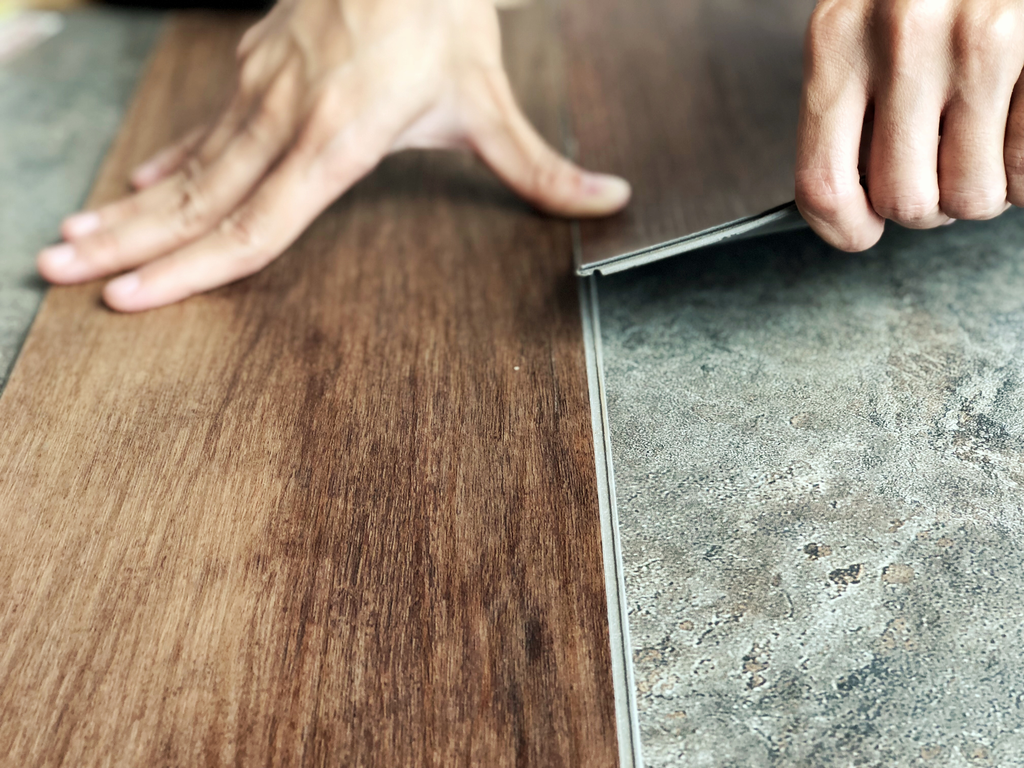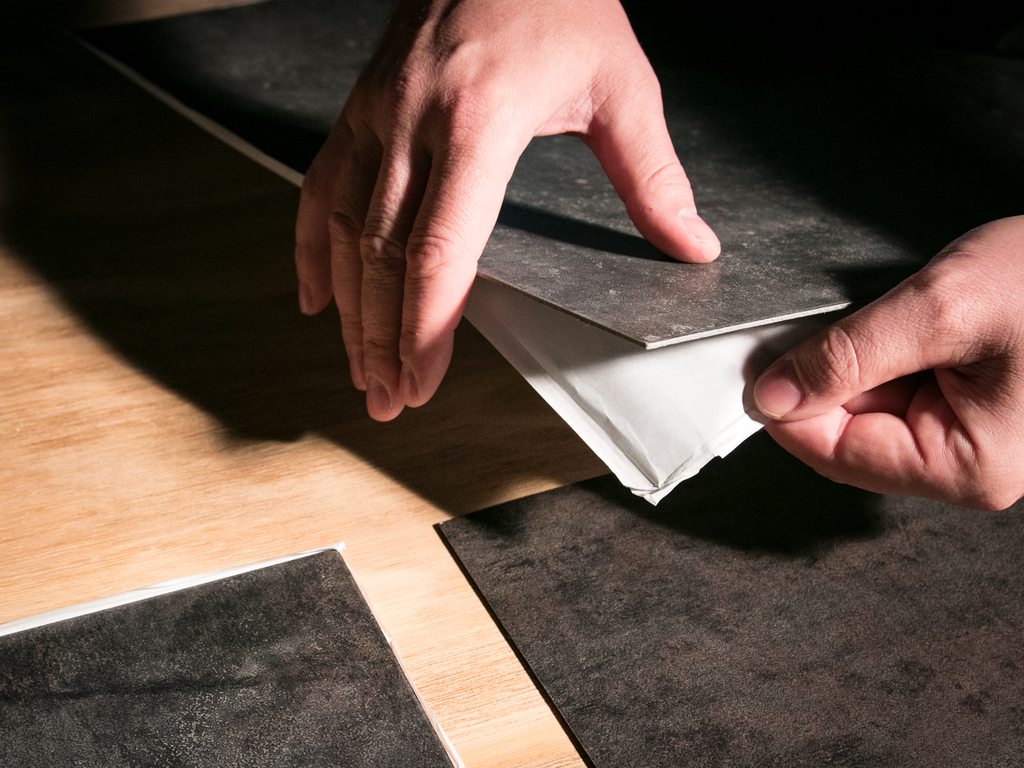
Vinyl: A Carefree and Economical Flooring Option
Do you love the appearance of stone, tile, or hardwood floors but don’t like the price or the upkeep? Fortunately, flooring manufacturers now offer numerous budget-friendly options that are long-lasting and easy to maintain.
Vinyl is the leading type of resilient flooring, an industry term that refers to any solid flooring material that bounces back. It sits in the middle ground between hard floors (like stone) and soft floors (like carpeting). Other resilient flooring options include linoleum and rubber.
Vinyl flooring was first manufactured in 1933. In the past decade, the introduction of thicker and more durable vinyl composite materials breathed new life into the vinyl flooring industry, significantly expanding its popularity with consumers.
Vinyl flooring comes in a wide variety of colors and patterns to match any decor, including the warm look of wood, the solid look of stone, or the visual impact of ceramic tile. You’ll find it in three major formats—sheets, planks, and tiles.

1. Sheets
Vinyl sheet flooring comes in 6- or 12-foot wide rolls, which are cut to fit a room’s dimensions and attached with adhesives. Among the three major types of vinyl flooring, sheets are more likely to require professional installation.
All vinyl flooring products are waterproof. However, with minimal seams to allow water to seep below the surface, vinyl sheets are ideal for high-moisture areas like bathrooms and laundry rooms.
In all types of vinyl flooring, it’s essential to consider the surface coating. Also called the wearlayer, surface coatings come in three broad categories:
Vinyl no-wax – best for light traffic areas
Urethane – more resistant to scratches and scuff marks
Enhanced urethane – best for heavy traffic areas

2. Planks
In the 1970s, vinyl plank flooring with interlocking and beveled edges initially hit the market. More recently, the industry has developed floating planks (no glue needed) with thicker rigid cores.
Today’s vinyl planks are substantially more durable. They’re made of several layers of sandwiched material, including thicker surface coatings and greater use of embossing techniques that successfully mimic wood, stone, or ceramic tile surfaces.
Rigid core planks are well suited for DIY installations. Two of the most popular types of vinyl plank flooring include:
Wood plastic composite (WPC) has a rigid core made from recycled wood pulp and plastic composites. The core improves the strength and stability of the interlocking planks and eliminates the need for an underlayment.
Stone plastic composite (SPC) creates an even more durable core layer by using limestone and other stabilizers. Some SPC vinyl planks include an attached underlayment that reduces the sound of foot traffic and improves the floor’s softness and comfort.

3. Tiles
Vinyl tiles can mimic wood, but they are particularly effective in replicating ceramic tile or stone flooring. Some vinyl tiles can be grouted, to provide a more realistic stone or tile appearance. Keep in mind, however, that depending on the color of the grout, it can be challenging to keep grout lines clean.
Many of today’s vinyl tile products have a peel and stick backing, which makes them suitable for DIY projects. It’s usually a quick and easy project, especially in small spaces.
Luxury vinyl tiles (LVTs) are comprised of three layers: a durable vinyl, a color or photographic film layer for the design, and a protective layer. They are used in homes as well as commercial buildings.
In most home applications, it’s essential to make sure the floor below your tiles is smooth. Also, some vinyl tiles must be “acclimated” to the environment before installation to ensure a proper fit and the best performance.
With the newest options on designs and appearance, durability, ease of care, and comfort, vinyl may be your choice for flooring in your home.
Other Considerations
Some vinyl products can be damaged by exposure to the sun and will need to be protected from extended and repeated exposure to direct sunlight. Extreme temperatures can also damage vinyl flooring, so it’s best for indoor projects.
Keep in mind that vinyl is made from polyvinyl chloride or PVC. Many manufacturers have reduced the amount of PVC and phthalates in their products, but it isn’t very easy to research specific products and determine their environmental impact in your home.
Manufacturers have also made headway in making vinyl a recyclable product. For example, Armstrong’s On&On Recycling Program accepts a wide range of flooring materials used in commercial settings, including competitors’ products.
